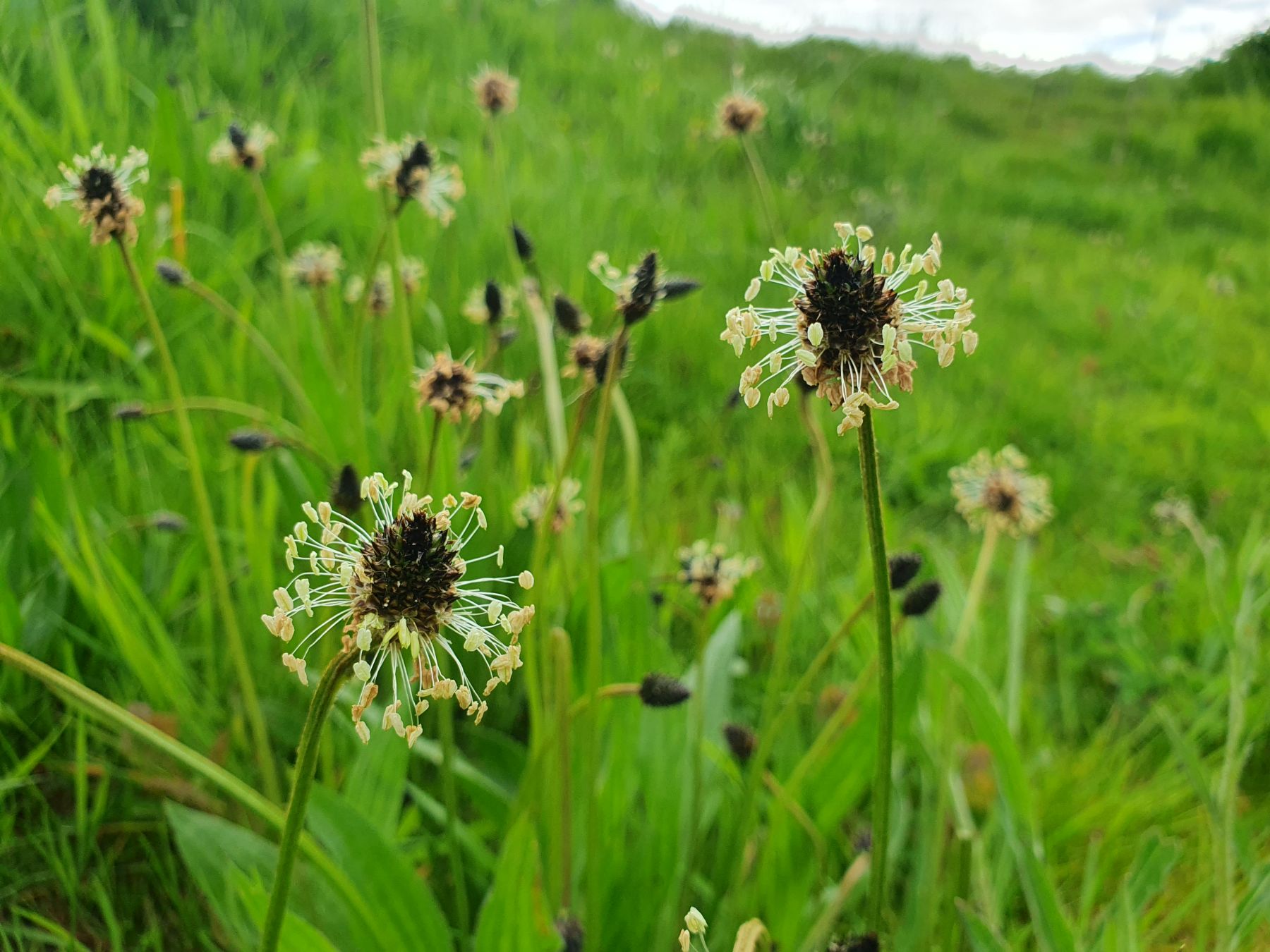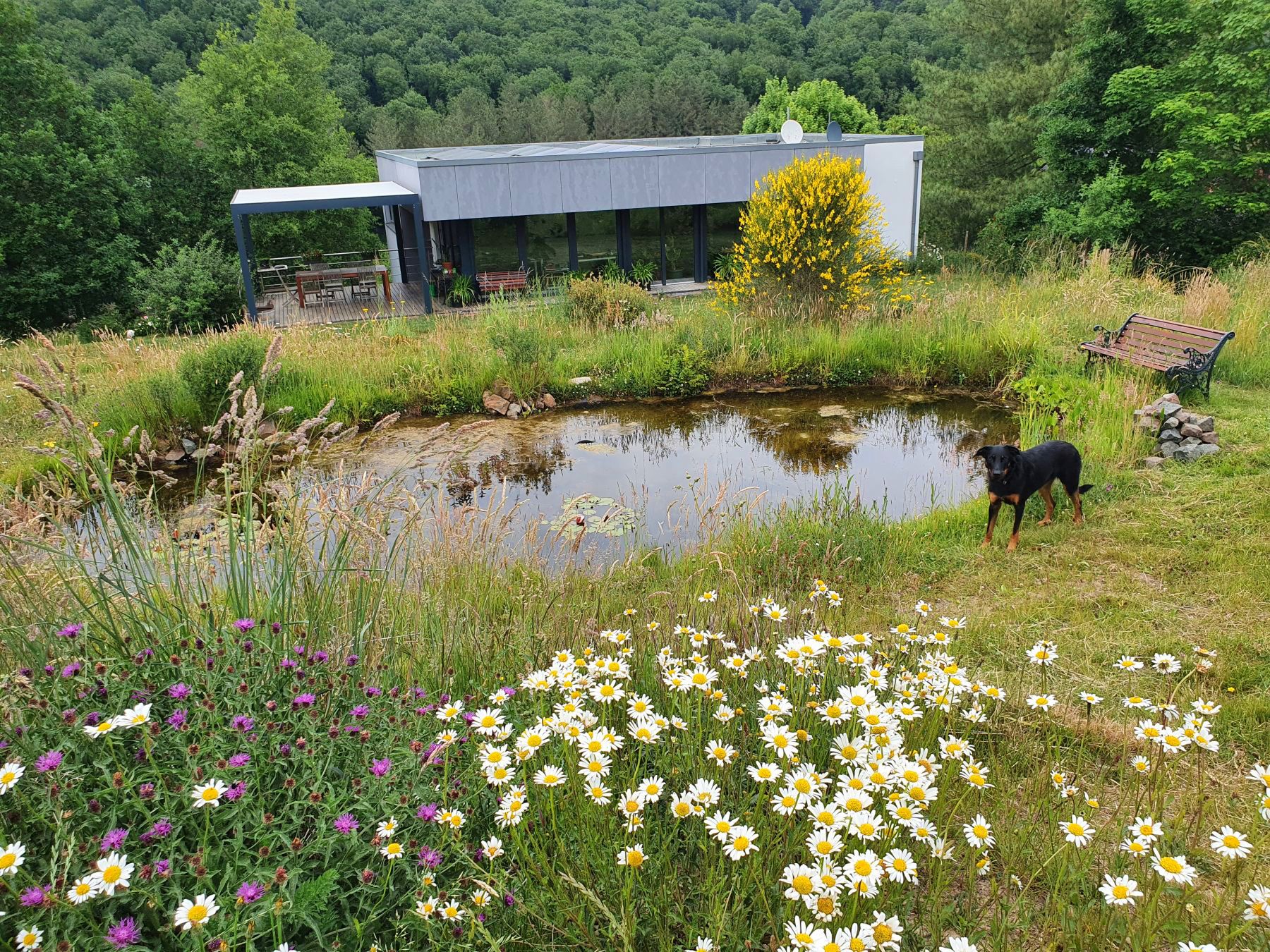

The showpiece of many gardens is a sleek lawn, with 100% fresh green grass. To maintain such a billiard cloth, it is often watered, fertilized, limed, scarified, treated with herbicides and mown very frequently. In most of our gardens more than half of the area is lawn. That's a lot of open space when you add this up.
Everyone’s taste is different, and everyone is of course free to arrange their garden as they wish. I just want to offer a different perspective here. For our local biodiversity, a lawn is a desert without food and of no value. In addition, with our current warm dry summers, lawns often turn into brown carpets, so it is increasingly difficult to keep them beautiful. So, what's the alternative, I hear you say?
You might have heard of NoMowMay or ByeByeGrass. These initiatives call for reducing the surface of your lawn by not mowing a few square meters or a larger area for at least one month, but ideally even longer and in this way allowing the flowers to bloom. Longer grass is more resistant to drought and heat and attracts pollinators and other insects that can hide, cool, eat or reproduce here. One can also calculate a nectar score for your own flower buffet. And in turn insects lure birds, hedgehogs, frogs to these areas….
It's worth giving it a try. Not mowing the grass for a month will not immediately result in a sea of flowers, but you will see which species emerge spontaneously out of your garden’s seed bank. You can then sow more flowers afterwards that will do well on your soil type. Look at what blooms on the roadsides near you, these species are well adjusted to the local conditions. If you have mowed and fertilized your lawn intensively for years, the process might take a little longer, but just observing how it evolves is inspiring. Be sure not to add manure or compost. The poorer the soil, the more competition there is between grasses and flowers, and the more species will grow in combination.
Some of us like wilder gardens where a wildflower meadow with mown grass paths fits perfectly. Others prefer to keep it a bit tidier, which is also possible. Here are some wonderful examples to inspire you. You can be very creative and mow different shapes and experiment with different grass lengths. The maintenance of such a wildflower meadow is mowing a first-time mid-June before the gras seeds spread, a second time at the end of September and if the grass continues to grow, a third mowing in October/November so that the grass enters the winter as short as possible. Mowing long grass is easiest with a brush cutter and it is important to dispose of the clippings to impoverish your soil. You will see that year after year the grass becomes less high and that you get more diversity!
A short lawn is in principle mainly functional for sitting, eating, or playing. I invite you to take a different look at your garden and ask yourself if there are some zones where you can give flowers and biodiversity more opportunities. More nature, less watering, and less work, so more time for you to enjoy all those new beautiful colours. Take another step towards a climate-robust and ecological garden!
Still not quite sure how to get started, but got your curiosity triggered, do contact us for advice.


